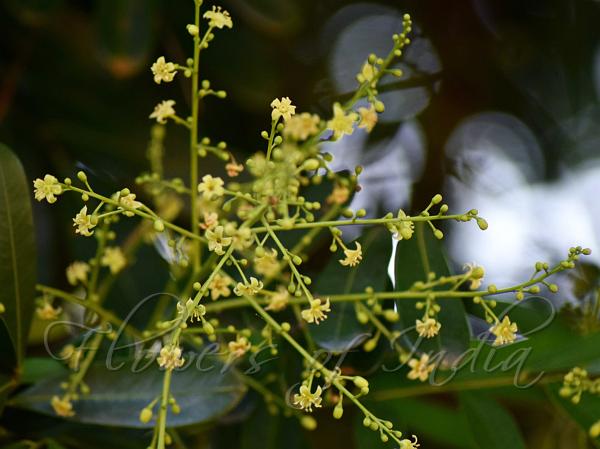|
| Paradise Tree |
|

|

| File size | 513721 |
| Original date | 1/15/19 11:12 PM |
| Resolution | x |
| Flash | Flash did not fire, auto |
| Focal length | 185.0mm |
| Exposure time | 1/500s |
| Aperture | 4.5 |
| Focus Distance | |
| Metering Mode | $meteringMode |
| Camera make | NIKON CORPORATION |
| Camera model | NIKON D5300 |
| Sensor type |
|
|
|
|
Photo: |
Botanical name: Simarouba glauca Family: Simaroubaceae (Quassia family)
Synonyms: Quassia simarouba, Simarouba officinalis
Synonyms: Quassia simarouba, Simarouba officinalis
Paradise Tree is an evergreen, small to medium-sized
tree growing up to 15 m in height, with a narrow crown, well-developed
root system, and straight, cylindrical bole that can be at least 30 cm
in diameter. The leaves are arranged alternately, are odd pinnately
compound, up to 40 cm long, with 10-20 leaflets. The leaflets are up to
10 cm in length, dark green above, lighter below, with an entire margin
and rounded leaf tip. Flowers are arranged in at branch-ends and in
leaf-axils, in panicles. The calyx has 5 unfused, greenish sepals. The
flower has 5 free yellowish-white overlapping petals. Male flowers have
10 stamens and no ovaries. Female flowers have 10 nonfunctional stamens
and 5 unfused ovaries each with a single locule and seed. Occasionally
there are perfect flowers produced on either the staminate or
carpellate trees. The fruit is an oval purple/black drupe at maturity.
The fruits can be eaten raw but are of inferior quality. The seed
produces edible oil used in the preparation of bakery products and for
industrial purposes. Seed shells can be used in the manufacture of
particle board, activated charcoal, or as fuel. The wood is used for
interior construction, boxes and crates, furniture, veneer, etc. It is
also used for fuel. Paradise Tree is found in Central America.
Medicinal uses: The leaves and bark of
Paradise Tree have a long history of medicinal use in the tropics,
particularly in the treatment of malaria, fevers and dysentery; as an
astringent to stop bleeding; and as a tonic. They are also used as a
digestive, emmenagogue and to treat parasites both within and on the
body. Research has discovered a range of medically active compounds in
the plant. The main active compounds are a group of triterpenes called
quassinoids.
The leaves and bark of
Paradise Tree have a long history of medicinal use in the tropics,
particularly in the treatment of malaria, fevers and dysentery; as an
astringent to stop bleeding; and as a tonic. They are also used as a
digestive, emmenagogue and to treat parasites both within and on the
body. Research has discovered a range of medically active compounds in
the plant. The main active compounds are a group of triterpenes called
quassinoids.
Medicinal uses:
 The leaves and bark of
Paradise Tree have a long history of medicinal use in the tropics,
particularly in the treatment of malaria, fevers and dysentery; as an
astringent to stop bleeding; and as a tonic. They are also used as a
digestive, emmenagogue and to treat parasites both within and on the
body. Research has discovered a range of medically active compounds in
the plant. The main active compounds are a group of triterpenes called
quassinoids.
The leaves and bark of
Paradise Tree have a long history of medicinal use in the tropics,
particularly in the treatment of malaria, fevers and dysentery; as an
astringent to stop bleeding; and as a tonic. They are also used as a
digestive, emmenagogue and to treat parasites both within and on the
body. Research has discovered a range of medically active compounds in
the plant. The main active compounds are a group of triterpenes called
quassinoids. | Identification credit: Ashutosh Sharma | Photographed in cultivation at TNAU, Coimbatore, Tamil Nadu & Jhrakhand. |
• Is this flower misidentified? If yes,